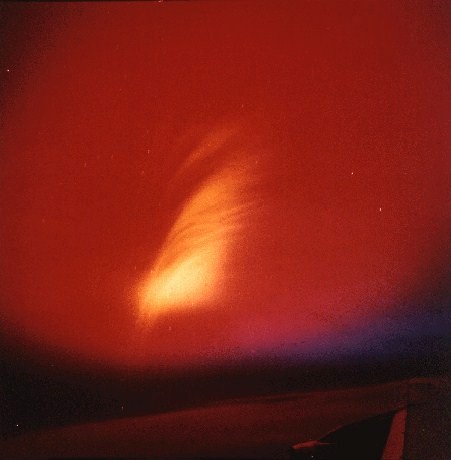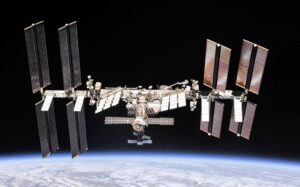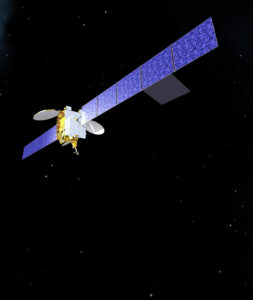Starfish Prime: When The US Set Off a Nuke Over The Pacific
22nd Aug 2022
It is now over 50 years since Starfish Prime, a serious of dangerous, but undeniably interesting nuclear bomb tests performed by the United States. It told us a lot about the damage and chaos that nukes could cause.
Sadly, in times of war in Europe, a lot of people have been left wondering what could happen if Vladimir Putin were to push the red button. Starfish Prime gives us some insight, even though it took place 50 years ago. These dangerous bomb tests are one of the only real-world examples of such a huge nuke being detonated, and the effects were profound.
The impact of the controlled bomb reached for thousands of miles, and the aftermath was shocking.
The test may well have been fuelled by political chest-beating. Both the US and the USSR had, in the 1950s, agreed to stop atmospheric tests of their arsenal, but by the height of the Cold War, the Soviet Union began testing, and the United States responded in kind.
July 9, 1962. The Thor Missile Launches
The U.S. launched their nuclear “Thor” missile from an island around 900 miles off the coast of Hawaii. The missile would reach heights of over 600 miles before dipping down and detonating at the height that had been programmed before, 240 miles in the air.
The missile had a power of 1.4 megatons. That measurement doesn’t mean much to the average person in isolation. To put it into context, it was around 500 times as powerful as the nuclear bomb that devestated Hiroshima.
The US military only partially knew what to expect. For instance, they knew there wouldn’t be a double flash effect or the “mushroom cloud” we associate with nuclear bombs, but nobody knew what the exact fallout would be from this risky test.
The researchers sent up 27 small missiles with their own scientific instruments onboard. They positioned a number of boats and planes to try to test and collect data.
In Hawaii, people held parties and events and gathered to watch the spectacle from the “best seat in the house”, but others saw the impacts from much further afield. Electromagnetic pulses initiated aurora borealis-style phenomena seen as far away as New Zealand. This level of phenomenon rivaled The Carrington Event, the huge solar storm of 1859. An event on this scale would cause chaos today, as the reliance on satellites and electricity has grown. As such, one can draw numerous parallels to the threat of nuclear weapons, as displayed in Starfish Prime.
What The US Learned
The results blew away expectations. They surprised nobody in the sense of nuclear weapons being incredibly destructive, but likewise, nobody could foresee some of the effects.
For instance, Earth’s own magnetic field attracted ionised radiation from the test and, in the process, made a radiation belt. Analysis dubbed it the “Starfish belt” and a number of satellites in it failed. They included Ariel-1, the first satellite Britain successfully utilised, and Telstar 1 which was the first ever television broadcasting satellite that sent signals live to television sets.
The bomb also caused electrons to accelerate at an unbelievable speed, and this also creates a temporary magnetic field, an EMP, or electromagnetic pulse. This is something we didn’t necessarily understand at the same level in the 1960s.
The EMP impacts had an impact on electricity, even hundreds of miles away. Hawaii saw streetlights blown and phones stop working. There were also reports of blackouts on the radio and scary electrical surges. Consider how much more we rely on satellites, electronic equipment, and telephone signal. And now, consider the EMO impact of a nuclear blast on this sort of scale.
Washington State’s Department of Health simulated that:
“A 1.4 Megaton bomb launched about 250 miles above Kansas would destroy most of the electronics that were not protected in the entire Continental United States.”
With all electronic items impacted, including cars, and damage to the whole electrical supply across continents, the picture painted is that of a dystopian future, not to mention the nuclear winter effect on agriculture.
Connecting the EMP Dots
EMPs are also one of the reasons why solar flares such as The Carrington Event are such a huge fear for people. As we saw, The Sun has the capability to emit these highly energised particles, which also have untold capacity to hurt satellites, and even the astronauts who are in space at the time.
Many people are quick in prophesying that nuclear war would never really be an option for Vladimir Putin. When you consider what we learned throughout Starfish Prime (and the decades that followed), it seems suicidal electronically. The idea that Putin would nuke a country as close as Finland (as he has threatened) reads as self-defeating. There is no way that detonating a bomb such as this would not have a huge impact on parts of Russia.
An End to Testing
On November 1st, 1962, things finally cooled somewhat. The Soviets started to retire their missiles in Cuba and the fact that the countries had arguably been close to nuclear war, President Kennedy and Premier Kruschchev signed the Limited Nuclear Test Ban Treaty in 1963. This banned any testing on the scale of Starfish Prime. All sides have honoured the treaty for almost 60 years.
The Modern Outlook
Nobody really knows if Putin means his threats. Many see it as absurd that humankind has reached the stage that it has.
According to icanw.org: “Many of the modern nuclear weapons in Russian and U.S. nuclear weapons are thermonuclear weapons and have explosive yields of the equivalent at least 100 kilotons of dynamite.”
Consider the devastation we have seen with nuclear bombs with a fraction of this capacity and you will start to understand the fact that going nuclear with warfare could see an end to all humans. If we’re unfortunate, there is also every chance of experiencing EMP effects on a similar level due to a solar storm. We’re simply lack preparations for it.
![Beauty of the Pink Moon And Lyrid Meteor Shower in This Week’s Best Astrophotos [19-26 April] Beauty of the Pink Moon And Lyrid Meteor Shower in This Week’s Best Astrophotos [19-26 April]](https://orbitaltoday.com/wp-content/uploads/2024/04/Pink-Moon-is-on-its-way-above-the-mountains-1-300x300.jpg)





Thank you for your comment! It will be visible on the site after moderation.